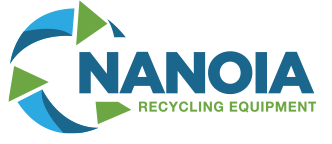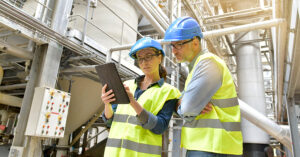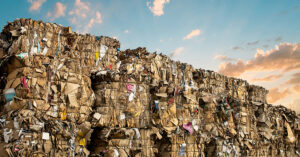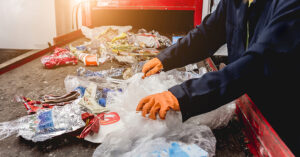In today’s business landscape, sustainability isn’t just a buzzword—it’s a strategic advantage. Implementing a recycling program can lower operational costs, enhance your brand’s image, and demonstrate a commitment to environmental responsibility. For many industries, balers and compactors are essential tools that help streamline recycling efforts and maximize efficiency.
If you’re wondering how to implement a recycling program that actually works—one that’s cost-effective, scalable, and easy to manage—this guide will walk you through the process.
Evaluate Your Current Waste Management Process
Conduct a Waste Audit
The first step in implementing a successful recycling program is to understand what waste your facility generates. Conduct a thorough audit:
- Identify waste types: cardboard (OCC), plastics, paper, metals, and organic waste
- Measure the volume and weight of recyclable materials
- Document current disposal methods, frequency, and associated costs
Understand Waste Flow
Examine how materials move through your facility from point of generation to disposal. Identify areas where recyclable materials accumulate and determine if these collection points are efficient or need reworking.
Set Goals and Define Success Metrics
Establish Clear Recycling Objectives
Once you have a clear picture of your waste stream, establish specific recycling goals. These might include:
- Reducing landfill waste by a certain percentage
- Increasing monthly cardboard recycling tonnage
- Cutting waste hauling pickups from daily to weekly
Choose Performance Metrics
Define how you’ll measure the program’s success:
- Monthly bale output by material type
- Reduction in waste hauling costs
- ROI on baler or compactor investment over 6 to 12 months
Choose the Right Equipment
Determine Equipment Needs Based on Waste Volume and Type
Balers and compactors come in many configurations, each tailored to specific materials and output levels:
- Vertical balers: Ideal for lower-volume users handling cardboard or plastic wrap
- Horizontal balers: Designed for high-volume facilities, especially those generating consistent waste throughout the day
- Stationary compactors: Best for dry waste, such as packaging and paper
- Self-contained compactors: Handle wet waste, ideal for restaurants or food processing facilities
Evaluate Space and Power Requirements
Before purchasing recycling equipment, assess:
- Floor space: Make sure your facility can accommodate the equipment footprint
- Ceiling height: Especially relevant for vertical balers
- Electrical supply: Most industrial machines require 3-phase power
Consider Automation and Throughput
If your operation handles large volumes, consider automation features:
- Auto-tie balers to reduce manual labor
- Conveyor-fed systems for continuous loading
Design and Plan Your System Layout
Collaborate on Site Planning
Work with experienced professionals to design a layout that enhances productivity:
- Place equipment near waste generation areas
- Ensure safe and efficient loading zones
- Optimize flow to minimize employee travel time
Integrate with Existing Operations
Make sure the recycling system integrates seamlessly:
- Position balers near loading docks for easy outbound shipping
- Avoid disrupting existing workflows
- Consider ergonomics and safety for operators
Address Logistics and Installation
Site Preparation
Plan ahead for equipment installation:
- Secure any necessary permits
- Coordinate electrical upgrades if required
- Prepare the space by clearing obstructions and reinforcing the floor if needed
Delivery and Equipment Setup
Partner with a supplier that handles end-to-end logistics:
- Timely delivery and professional installation
- On-site testing and calibration
- Operator training included with setup
Train Staff and Promote Buy-In
Staff Training
Proper training is essential for safety and efficiency:
- Demonstrate how to load and operate balers or compactors
- Teach sorting and contamination prevention
- Provide guidance on troubleshooting and emergency shutdown procedures
Create a Culture of Recycling
Encourage participation through:
- Visible signage and recycling bins
- Internal campaigns to highlight environmental impact
- Recognition programs to reward departments that recycle the most
Set Up Maintenance and Monitoring
Preventive Maintenance Planning
Regular maintenance ensures optimal performance:
- Schedule monthly inspections
- Keep spare parts on hand for common issues (belts, sensors, oil)
- Partner with a provider that offers service contracts
Performance Monitoring
Use metrics to track effectiveness:
- Monitor bale weight and hauling frequency
- Compare monthly data to baseline metrics
- Adjust equipment usage and sorting procedures as needed
Financing and Cost Justification
Understand Your Options
Don’t let upfront costs be a barrier—explore:
- Leasing programs with low monthly payments
- Equipment financing with flexible terms
- Tax deductions like Section 179 for capital investments
Calculate ROI
A well-run recycling program can pay for itself:
- Lower hauling fees due to fewer pickups
- Revenue from baled commodities
- Reduced labor costs through automation
Scale and Expand
Evaluate Program Growth
As your business grows, your recycling needs may expand:
- Add more balers to handle increased material
- Consider centralizing waste processing for multi-location operations
Adapt to New Materials
Diversify your recycling efforts:
- Use specialized equipment for foam, shrink wrap, or aluminum
- Retrofit existing systems for additional throughput or materials
Why Choose Nanoia Recycling Equipment
Implementing a recycling program with balers and compactors is a strategic move—but only if done correctly. At Nanoia Recycling Equipment, we provide more than just machines—we deliver complete solutions:
- Custom system design and layout planning
- Equipment fabrication, delivery, and professional installation
- Financing options to match your budget
- Ongoing maintenance and repair services
We’ve helped businesses across industries reduce costs, optimize operations, and meet their sustainability goals with dependable recycling solutions.






